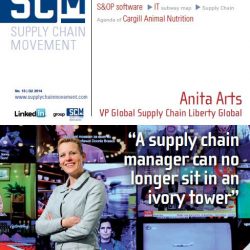Advanced analytics heralds a new S&OP phase

Supply chain segmentation offers new perspectives
If you want to utilize the Sales & Operations Planning (S&OP) opportunities to the full, you will need to segment your supply chain. The first step is to identify different patterns of demand, but segmentation also entails defining the right ways to respond to those demand patterns. Modern tools based on advanced analytical techniques for forecasting and simulation are indispensable.
By Marcel te Lindert
Avebe, protein used to be a waste product that was discharged into the surface water. But it has now become the product with the best value proposition for the company, thanks mainly to growing societal resistance to the use of animal proteins. More and more consumers are concerned about animal welfare in factory farming, not to mention the carbon footprint caused by livestock. “Following the outbreak of mad cow disease in the 1990s, potato protein enjoyed a meteoric rise for use in animal feed. After all, scientists had established a link between the disease and the animalbased ingredients that had been used in feed up until that point. In view of today’s rising demand for vegan products, we’ve also made our protein suitable for human consumption,” says Bas Wijnbergen, Supply Chain Manager at Avebe.
Avebe is struggling to keep pace with the growth in demand for the plant-based protein called Solanic, which is used in products such as veggie burgers and gelatin substitutes. “Two years ago we installed two new production lines at our facility in Gasselternijveen and they are already fully booked for the whole of this year. So we’re now building new plants to keep up with the explosion in demand,” comments Edwin de Jonge, Supply Chain Management Director at Avebe.
Economic trade-offs
The huge demand for Solanic illustrates the fact that Sales & Operations Planning (S&OP) based on volumes alone no longer goes far enough for Avebe. After all, the characteristics of protein sold as an end product are completely different from those of the company’s traditional product: potato starch. Whereas potato starch is sold per thousands of tons, the sales units for protein are just a few kilos. “And a volume-based plan isn’t sufficient for our other production lines either. Especially when we’re at a very high capacity utilization level, we have to make economic trade-offs to decide which product mixes we should or shouldn’t produce,” explains De Jonge.
Over the past year, Avebe has therefore put a lot of effort into implementing integrated business planning (IBP) as the next step after S&OP. In concrete terms, this means that the Finance department is now also involved in the monthly S&OP cycle. Now, when aligning the production schedule with the sales plan, Avebe not only focuses on the forecast volumes of the various products but can also take the profit impact of those products into account . “We used to do that occasionally, but only in the case of bottlenecks. We’ve now turned that into a routine process, so we can continuously see how to utilize our production lines to generate the most value. That’s not always self-evident. Some product mixes have a very low profit margin, so we primarily use them to keep the line ticking over,” adds De Jonge.
… … … … …
Read the full article in Supply Chain Movement 25 | Q2 – 2017










